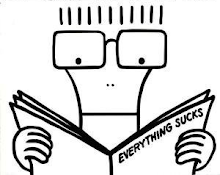According to Paul Hoynes of the Cleveland Plain Dealer,
While there is still hope that Miller will be able to pitch at some point this season, the Indians management are going to have to look long and hard at the long term value of Miller. While many asserted that he was destined to the bullpen because of his continual injury issues, there was hope that he would be able to get past the issues which have plagued his professional career.Lonnie Soloff, Indians head athletic trainer, said Miller will be out for eight weeks. He can then resume a throwing program, which essentially will take him to the end of the minor league season at Class AAA Buffalo.
Miller, who missed all of spring training with the big-league club because of a callous on the same finger, originally injured the tendon last year. He injured it once during the season and once again in the Arizona Fall League.
This year Miller was pitching well for Buffalo, but the unattached tendon in the finger caused a fistula to develop on the second crease of the underside of the finger between two callouses. Soloff said Dr. Graham determined that the fistula, a hole in the skin, which could lead to infection, would not close if the tendon wasn't re-attached to the bone.
Anthony Castrovince of MLB.com had the following report,
While the Indians medical staff annually ranks among the elite in the business, there is little doubt that they have misdiagnosed Miller to this point. That is not to say that they have at all harmed Miller, rather, it is to say that the direction the club took with Miller was misguided. There is little doubt in my mind at this point, that Miller will not be given any more shots at proving he is capable of being a major league starter, his role will now be to work out of the bullpen."It's a challenging injury," Soloff said. "It was a very challenging procedure to perform."
Miller actually suffered the injury a year ago and missed six weeks of action with the Bisons while resting the strain. The Indians felt Miller could get by without surgery.
But as a result of the strain, Miller's tendon would bowstring, and his skin sagged when his finger bent. That caused the skin to rub up against the baseball, creating two hardened calluses. Between those calluses, a hole developed in the skin.
Graham found that Miller's tendons were starting to fray and his finger's pulley system -- in layman's terms, the system that allows his finger to bend -- was not working properly.
"Closing [the hole in] the skin would not be enough [for Miller] to pitch at a high level," Soloff said.
This news is especially damaging to the Indians organization at it appeared they were prepared to go in one of two directions. The first, was to bring Miller up and give him a shot at long relief, expanding his bullpen role as he proved to be capable of doing so. The second, was to look into bringing in a quality major league bat. Jason Bay's name had been linked with the Indians in the off season, but the Pirates decided to hold out building Bay's value. With the way Bay is currently playing and the amount remaining on his contract, a Bay for Miller swap did not seem out of the question. That speculation however, can all but be disregarded.
I will continue to follow Adam Miller in hopes of uncovering any reason behind the continual problems he is having despite no obvious mechanical issues. I hope to also dig up some information on how Miller himself feels about the circumstances of this major injury.











